Being able to field score a buck quickly is the most crucial skill a deer hunter looking for a record-breaking slammer of a buck can possess. There are facts you can learn, estimates you can make, and observations to help you, but at the end of the day, field scoring a buck is still an inexact science.
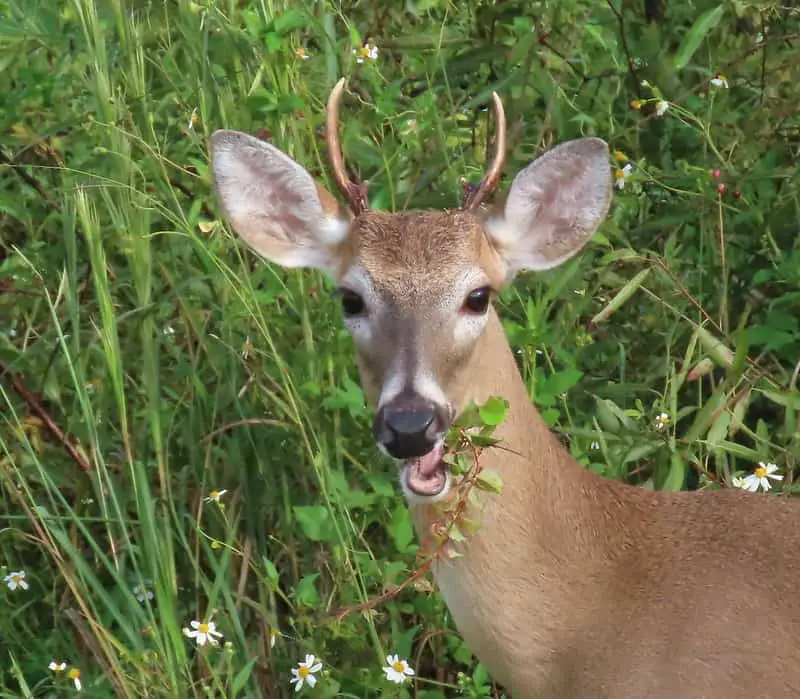
Field scoring a buck requires estimating the size of a buck’s main beam, point length, antler circumference, and inside spread. If a deer hunter is looking to score a Boone and Crockett record breaker, any deer with fewer than 10 points is not a shootable deer.
Related: How to score a buck’s rack.
Related: Tips for growing a deer food plot.
How to field score a buck.
There are four ”averages” a deer hunter must use to field judge a buck. The average whitetail buck’s:
- Eyes are 4 inches in circumference.
- Distance from the center of his eye to the end of his nose is 8 inches.
- Ears are about 6 inches long.
- Spread from alert ear tip to ear tip spans about 16 inches.
Once you have memorized these averages, you can use them as a ruler in the field.
Related: Decoding buck snorts.
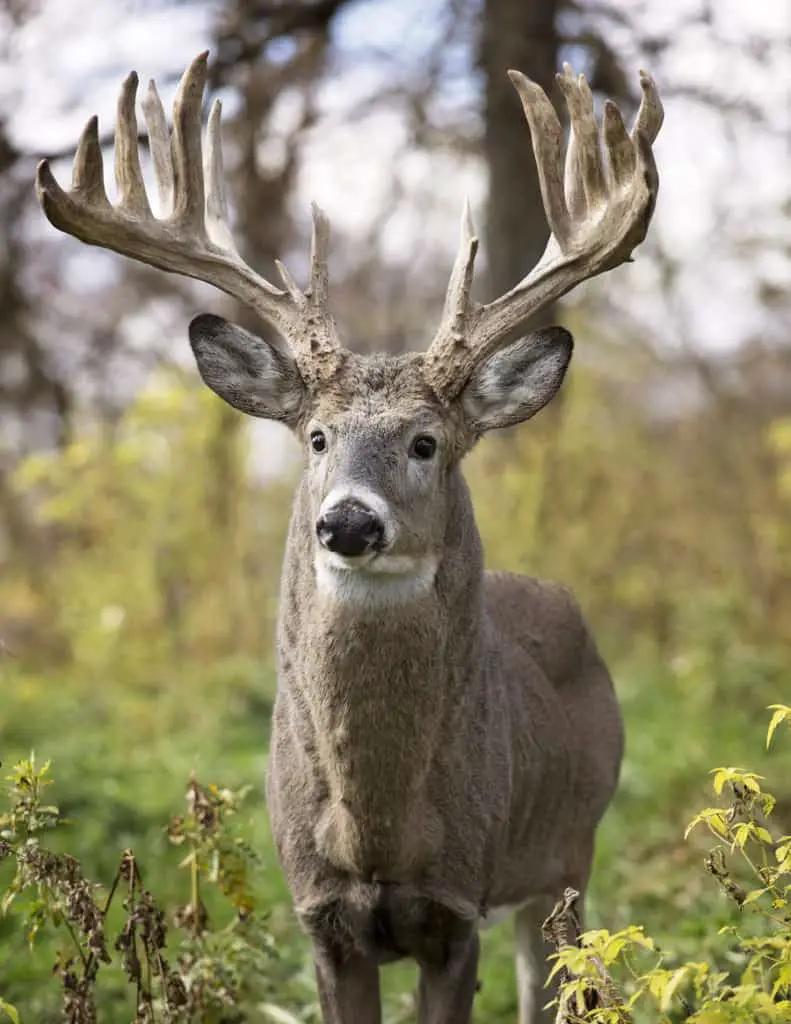
How to field judge a buck’s rack spread.
Using the buck above, let’s make some field judgments about the size of his rack.
Using his right ear, we can estimate that his right main beam is about twice as long as his 4-inch ear. By adding 8 inches to the average buck’s alert ear tip span of 16 inches, we can guess he has a 24-inch spread.
Related: Do deer whistles work?
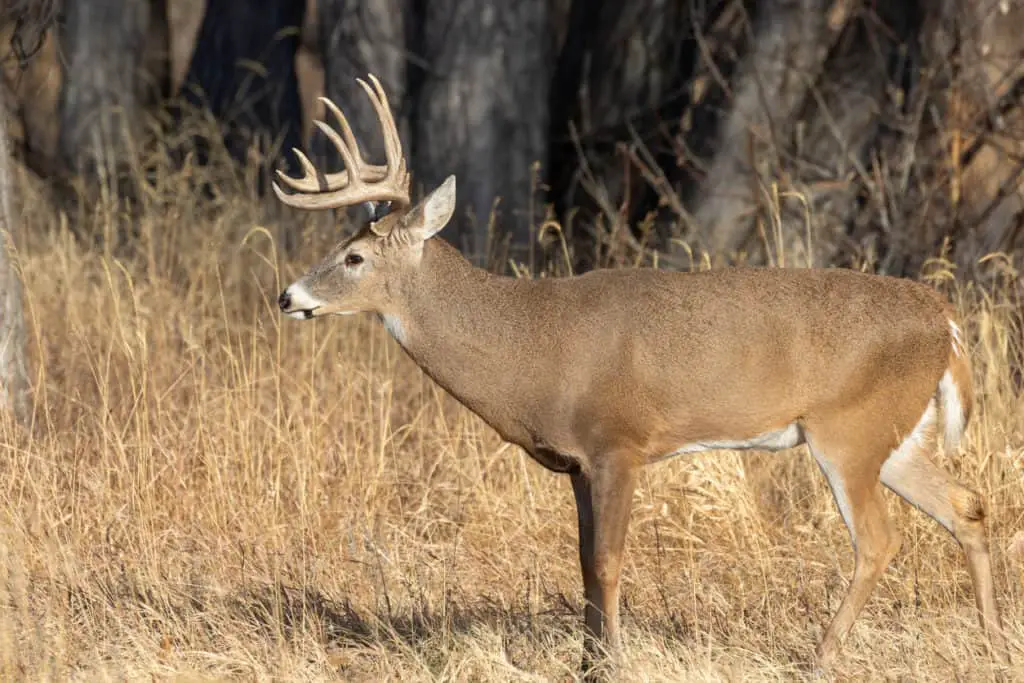
Field scoring a buck’s main beam length.
This buck gives us a rare side view (hint, they usually don’t), so we should be able to estimate the length of his main beam. Using the 8-inch length of his nose to the center of his eyes and ear length as rulers.
The straight run of his main beam is about 50% longer than the nose measurement (8 + 4 -= 12), plus the length of his ear (6), putting this buck’s main beam length at over 18 inches. If we estimate the upturn of the main beams points and their sweep forward, it would be safe to say this buck’s main beams are over 20 inches.
Related: What are deer warts?
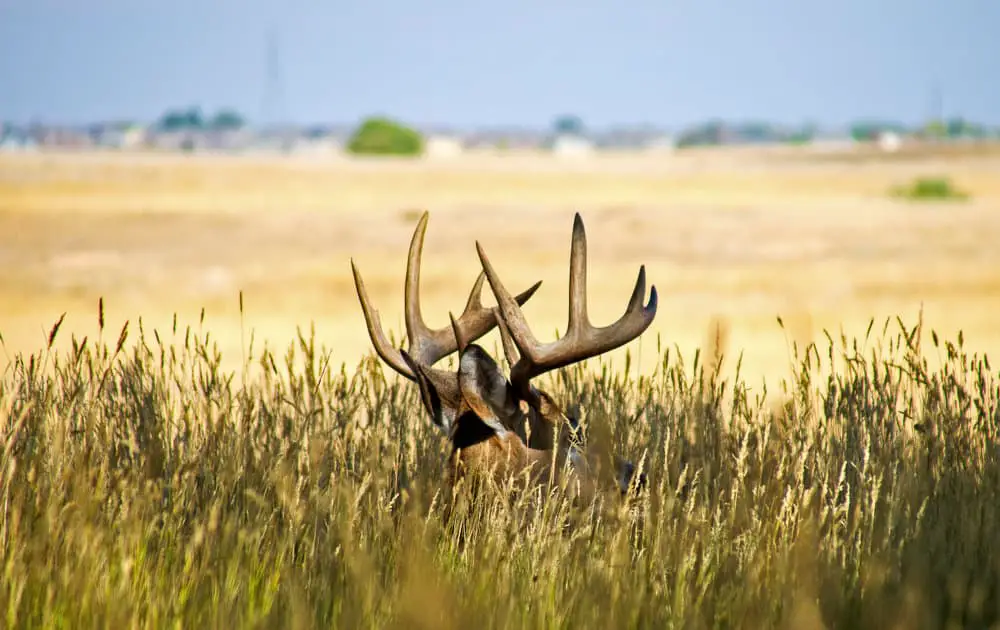
Counting a buck’s tips in the field.
Add to the inexact science the fleeting glimpses you get of a buck, and the uncertainty of your estimate is doubled. For the buck pictured above, we can estimate that his brow tines are at least 3/4 the size of his ears (4 inches).
If we stick to our law of averages and count the expected points (4 on this buck’s right antler side), plus the browser tine (1), and assume this buck is standard (typical vs. non-typical), we can safely estimate this is a 10-pointer.
Related: Deer feed and baiting.
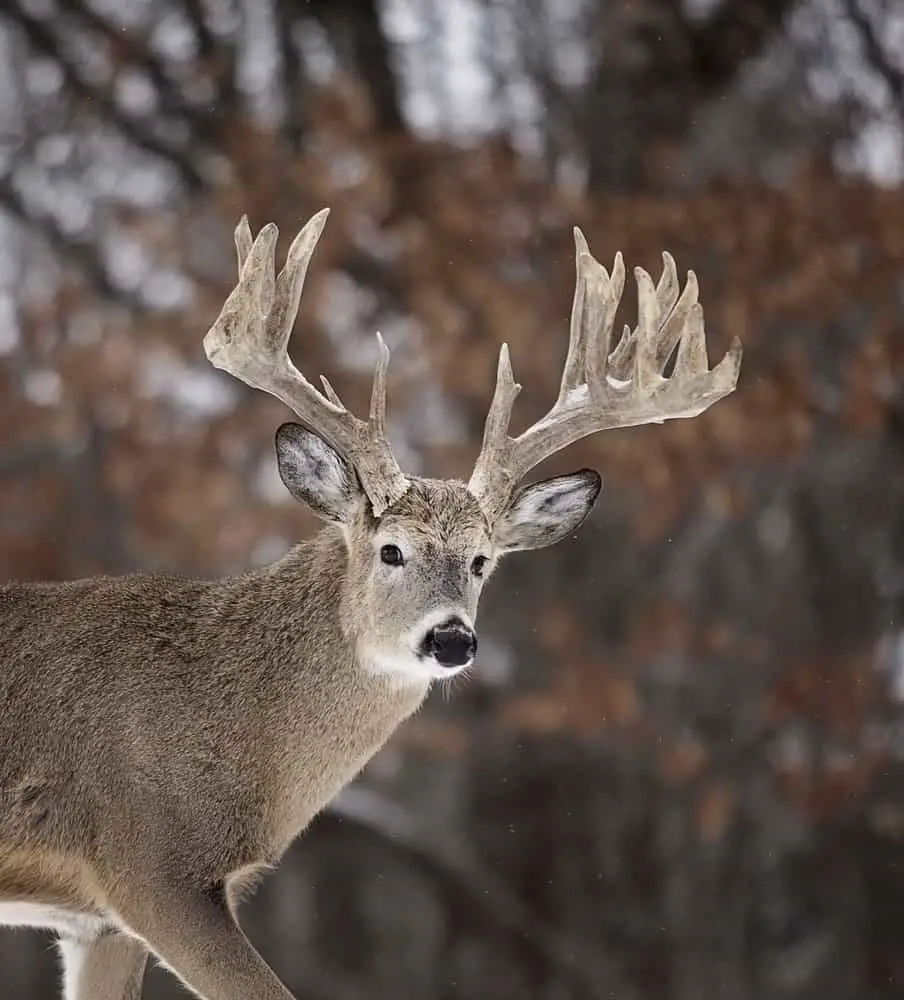
Field score a buck: Antler mass.
Field scoring antler circumference is determined by comparing it to the eye dimension (4 inches).
While not a great angle, this buck’s circumference between his burr and G1 are an easy 1.5 times his eye circumference (total of 6 inches), and the dimension for his G1 and G2 (they look about the same as an average buck’s eye) are at least 4 inches.
The fastest way to field score a buck.
There are a few outfitters and guides out there that will financially penalize you for taking an under-sized buck. The normal minimum score for such places is usually 150. Use the formula below to avoid paying the penalty but still collect enough information to score the buck before it moves out of sight.
Score the inside spread and one side of the antlers. Assuming the buck is symmetrical, multiply the antler measurement by two and add the spread dimension.
I know we are now trying to multiply a by gosh and by golly estimate to an inexact science. What could go wrong? Well, err on the side of caution, my friend.
Related: When is the best time of day to hunt deer?
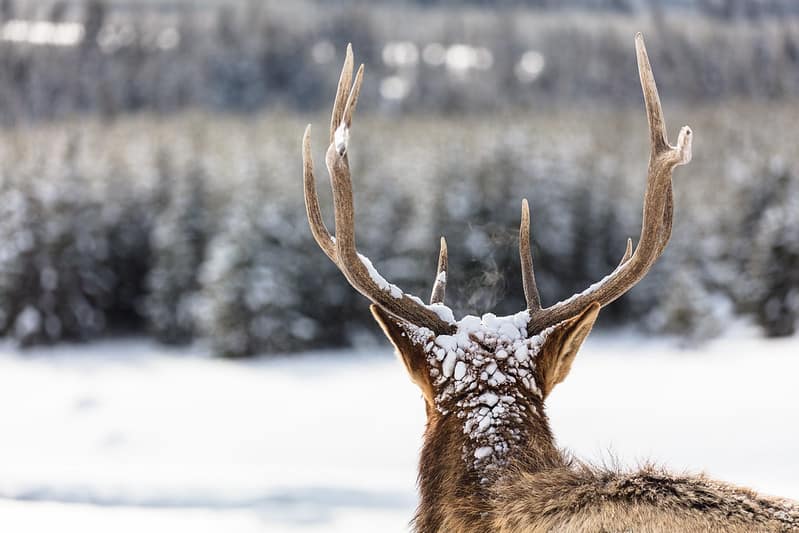
Using an app to field score a buck.
We have recently seen several phone apps claiming to field score a buck from a trail camera photo, video, or harvest photo. Many of these apps are like deer hunters; they overestimate their successes. Think again if you think an app can get within 5% of your buck’s actual score.
One day, these apps will replace the deer hunter’s ability to field score a buck, but today isn’t that day. Considering you’ll have to spend $60 for an app that scores and ages (wow, that’s a lot of promising) your buck, these apps ought to have better than a 2-star rating. Sadly, they don’t.
Using game cameras to field score a buck.
What wonderful times we live in. Today, you can have a picture of a buck waltzing past your stand sent to you while you are thousands of miles away. You can spend an entire evening field scoring your buck on the computer with that picture.
And any day now, if not already, your state will have made their use illegal.
Technology is seen as the antithesis of fair chase.
Field judging a buck takes a lot of practice.
Getting even reasonably good at field scoring a buck takes a lot of time and practice. The more angles the animal presents to you, the better your estimates will be, but sometimes you’ll only get one side or front view, and you’ll have to do more guessing than you like.
For now, learn your ”averages.” These numbers will give you a ruler to use in the field and help prevent you from taking an undersized buck just because you counted 8 points on it.
When you harvest a field scored buck, measure it with a tape and determine your accuracy.

